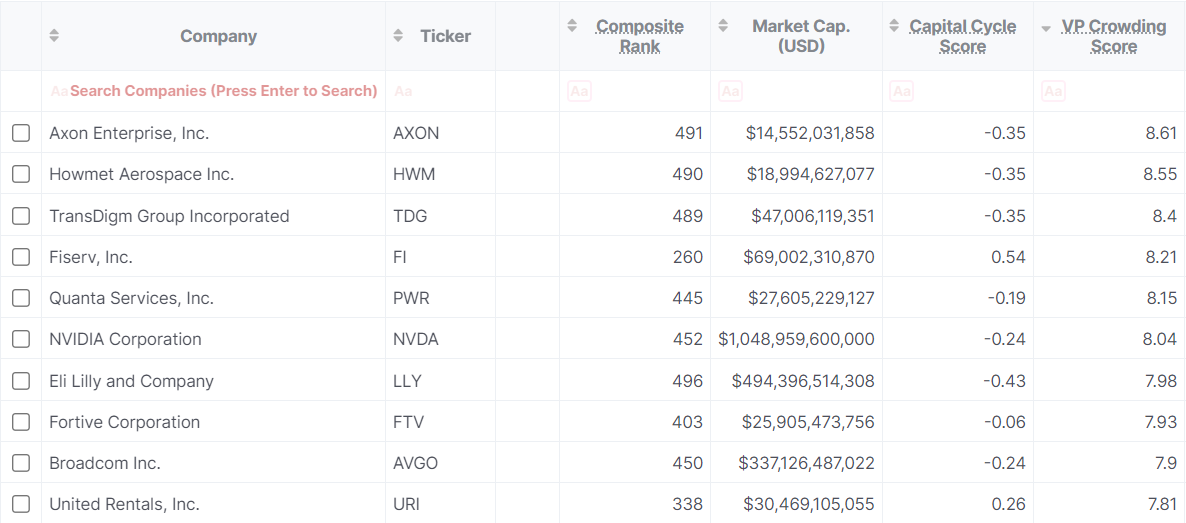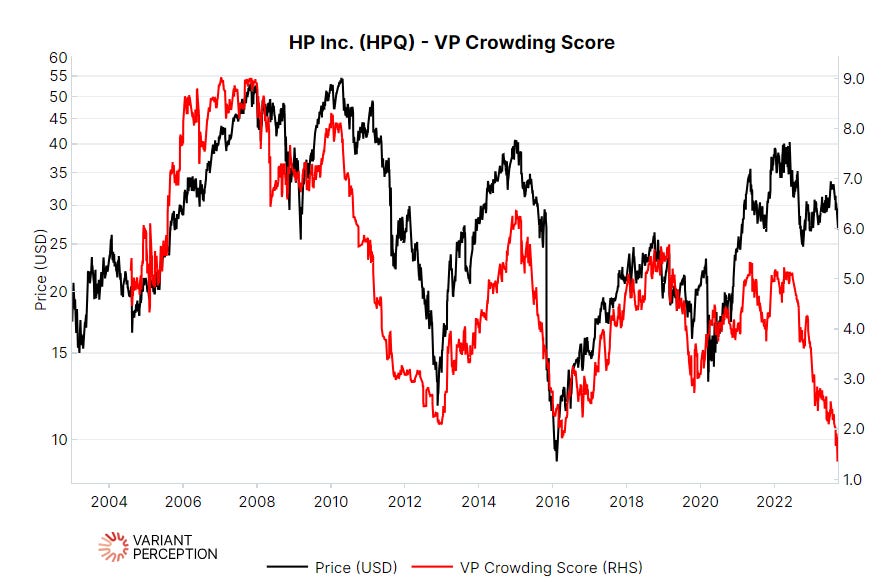U.S. Equities: Top/Bottom Names by Crowding
We have explained our approach on crowding a number of times, as shown in the links below:
Crowded names have negatively skewed forward return expectations. By quantifying crowding, we can use the score to help with portfolio risk management or to highlight new investment opportunities.
As a refresher, we think the most optimal way to utilize crowding is in the context of the capital cycle. Asymmetric investment opportunities tend to arise from the least popular names within a capital-scarce industry.
Categorizing Most/Least Crowded Names
VP's Crowding Score uses unique and uncorrelated inputs to capture a range of investor behaviors and flag when a stock is most/least at risk from herd mentality.
The following tables showcase crowding ranks on S&P 500 names as of Sep 29th.
Top 10 most crowded names:
As one can observe above, AXON currently registers the highest crowding score. In other words, the stock is at risk of benefiting less from good news and is potentially more vulnerable to bad news.
Bottom 10 least crowded names:
On the contrary, a stock like HPQ shows the least crowding score. In fact, it’s the lowest on record. This score implies the stock may potentially benefit more from good news and not get hurt as much by bad news compared to its uncrowded counterparts.
VP Understanding Webinar - VP Crowding (Equities)
In this webinar, Tian Yang, Head of Research at Variant Perception, and Ian Mellen, Quantitative Analyst at Variant Perception, showcase some specific use cases.
Clients can access the VP crowding score here:
https://portal.variantperception.com/dashboards/vp-research/stock-idea-generator





thanks for sharing !
You are very welcome.